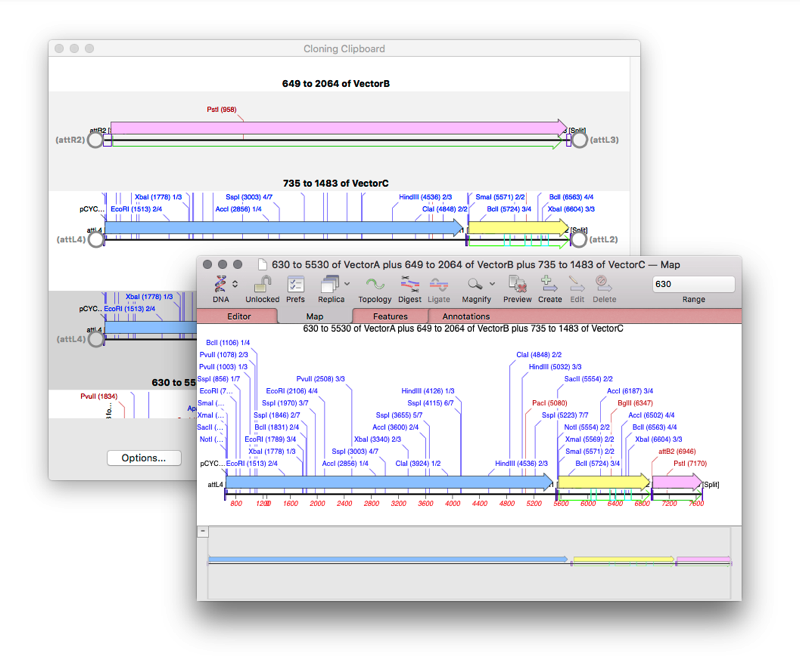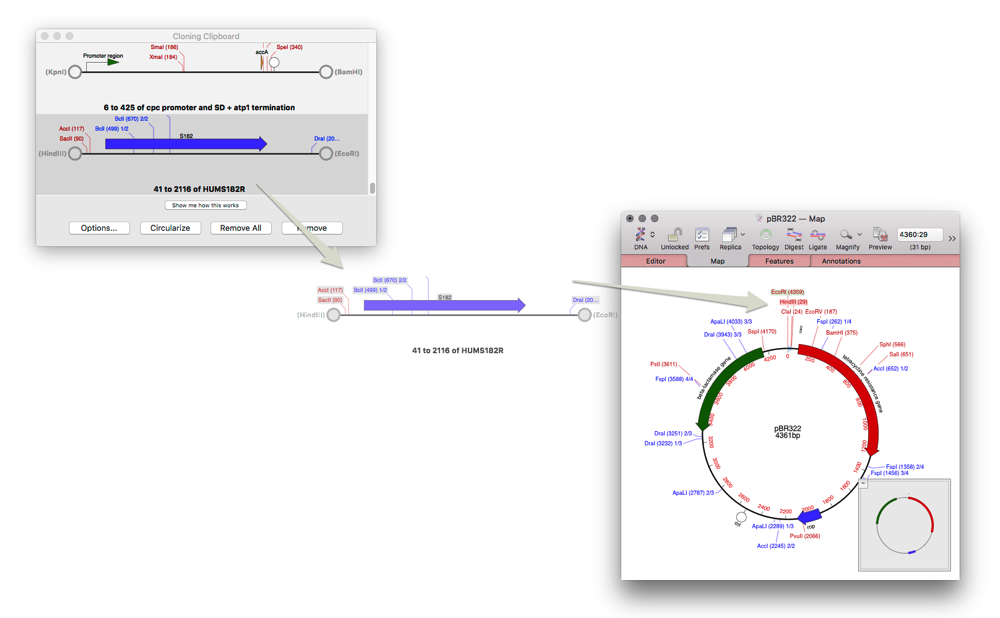The Cloning Clipboard is an easy, and flexible, way to design and document your cloning strategies. Recently we discussed how every ligation in a cloning procedure is documented and stored in a sequence, so you always know how a construct was made.
If you need to manipulate a fragment as a sequence, before ligating it, then it’s easy to do so. Just double click on a fragment in the Cloning Clipboard and you’ll create a new sequence window containing your fragment with its annotation. From now you can treat that as a normal MacVector sequence. Do remember though that the “digested end” information will be lost and in any ligation the new sequence will be treated as a blunt ended fragment.

If you drag a fragment from the Cloning Clipboard to a vector, then you’ll get the ligate dialog to allow you to ligate it into that vector. However, if you have already selected a pair of enzyme sites, then the ligation dialog does not appear. Instead your fragment is immediately ligated into those two sites. This also happens if there is an unambiguous way the two fragments would ligate together. For example an EcoRI-BamHI fragment would ligate directly into a vector digested with EcoR I and BamH I. However, an EcoR I-EcoR I fragment would not ligate directly into a vector digested with just EcoRI.

If you drag a fragment to the Desktop, then you’ll get the usual “Clipping” file containing only the sequence of your digested fragment.
In the next release (MacVector 14.5 is out very, very soon!) you’ll be able to easily generate flow charts showing how a construct was made. The Cloning Clipboard will allow you to export fragments as PDF, rather than sequences!
